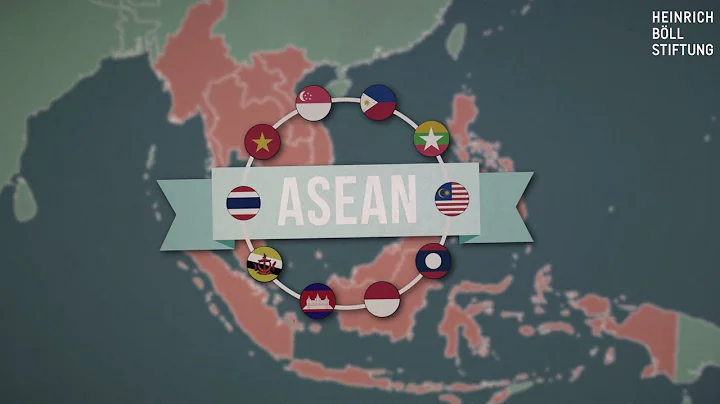On November 15, 2020, the Regional Comprehensive Economic Partnership Agreement (RCEP for short) was officially signed in Vietnam.

The 10 ASEAN countries and a total of 15 countries including China, Japan, South Korea, Australia, and New Zealand signed RCEP through video conference. The picture shows the video connection between Vietnamese Prime Minister Nguyen Xuan Phuc and Chinese Prime Minister Li Keqiang.
RCEP is a high-level free trade agreement initiated by the 10 ASEAN countries and participated by China, Japan, South Korea, Australia, New Zealand and other five countries that have free trade agreements with ASEAN. A total of 15 countries form a high-level free trade agreement. The content of the agreement involves the elimination of trade barriers, Create and improve a free investment environment, expand service trade, intellectual property protection and many other fields.
Vietnam is the rotating chairman of ASEAN in 2020 and an active promoter of RCEP. The elimination of trade barriers such as tariffs by RCEP will greatly help Vietnam expand its trade surplus.
For this "rising star" with rapid economic development, it is time to conduct an objective observation of Vietnam's aviation industry.
A "short-lived" assembly attempt
In the 1970s, after the Vietnam War ended, the U.S. military left behind a lot of discarded electrical equipment, aircraft engines and other spare parts when they withdrew from Vietnam.


Aircraft parts discarded by the US military during the Vietnam War on display in the Vietnam People's Army Air Force Museum
In the post-war environment where everything was in dire need, the Military Technology Institute of the Vietnam People's Army Air Force relied on these to successfully create Vietnam's first homemade aircraft: TL -1 reconnaissance aircraft.
TL-1 uses the IO-470F piston engine of the L-19 "Bird Dog" reconnaissance liaison aircraft used by the US military in the Vietnam War. The radio uses the captured US military Wilcox-807, as well as a large number of other airborne equipment. Parts discarded from the US military.

The TL-1
in the Vietnam People's Army Air Force Museum. Since the standardization and applicability of these bulk parts cannot be fully guaranteed, the TL-1 experienced severe shaking during the taxiing stage during its first test flight in August 1980. The first flight failed. Technicians spent a month solving this problem, and finally, the TL-1 finally made a successful test flight on September 25, 1980.
However, although Vietnam had aircraft assembly capabilities at the time, due to the lack of basic manufacturing capabilities, the TL-1 did not have the conditions for large-scale mass production and could not be assembled for the Vietnamese Air Force. After
, based on the TL-1, the Air Force Military Technical Institute successfully designed and manufactured the first trainer aircraft: the HL-1 trainer aircraft. But the HL-1 training aircraft also has the same problem - it does not have basic manufacturing capabilities, and all parts cannot be produced by itself.

HL-1
in the Vietnam People's Army Air Force Museum. If aircraft models were used as the "outline and lead" to focus on the aviation manufacturing industry, perhaps Vietnam's aviation industry today would be a different story. Unfortunately, due to the extremely difficult domestic economy in Vietnam at that time, subsequent plans for upgrading and developing new aircraft were forced to be shelved.
Building aircraft starts with spare parts
Since 1986, Vietnam has launched "reform and opening up" and vigorously developed its economy. In 1988, Vietnam officially promulgated the Foreign Investment Law to stipulate the scope of foreign-invested enterprises, which at that time mainly covered the tourism and service industries. Since then, Vietnam's economy has begun to "take off", with the annual GDP growth rate remaining above 6% for a long time.

In recent years, with the deepening of "reform and opening up", the scope of business that foreign capital can operate and invest in Vietnam has further expanded, including the aircraft parts manufacturing industry. Such a policy reflects Vietnam's progress in aircraft parts manufacturing. At the same time, with the rise of Vietnam's civil aviation industry, major aviation manufacturers have also increased investment and cooperation in Vietnam -
manufacturing civil aircraft parts
In 2009, Vietnam MHI Aerospe Co., Ltd. was established in Hanoi City The industrial zone invested in the construction of a Boeing 737 aircraft flap production plant and began to assemble flaps for Boeing 737 aircraft delivered to Asia. Since then, the cooperation between the two parties has further advanced: in October 2014, Vietnam MHI Aerospe Co., Ltd. put the Boeing 777 passenger aircraft door assembly plant into operation and began to assemble passenger cabin doors for the Boeing 777.
Almost at the same time, on April 23, 2014, Airbus announced that it had selected Nikkiso Vietnam, Inc. (NVI), the Vietnamese manufacturing subsidiary of Japan's Nikkiso Co., Ltd., as its partner to manufacture aircraft parts in Vietnam for the first time.According to the agreement between Airbus and Nikkiso Vietnam, Inc. (NVI), starting from August 2014, Nikkiso Vietnam, Inc. (NVI) began to manufacture composite vertical rods and sharklets for the wings of the A320 aircraft.

Manufacturing aero-engine parts
In September 2017, South Korea's Hanwha Group (Hanwha) held a groundbreaking ceremony for the Hanwha Engine Factory in Hanoi, Vietnam. This is Vietnam's first domestic investment project focusing on the aero-engine industry. According to information released by Vietnamese media, the The factory will produce engine parts for world-renowned aerospace engine companies such as GE Aviation, Pratt & Whitney and Rolls-Royce.

Deeply involved in the industrial chain
On March 29, 2019, the aerospace parts factory Sunshine invested by the American Universal Alloy Corporation Asia Pte.LTD in Da Nang High-Tech Park in Vietnam officially started construction. Sunshine will produce aerospace components made of aluminum alloys and composite materials, and these products will be exported to North America, the European Union, Malaysia and other markets.
Obviously, Vietnam is attracting more and more civil aviation suppliers from around the world to transfer their supply chains to the country in order to "learn from the best of hundreds of companies."
The love-hate drone
Vietnam, the host of the RCEP conference, said on November 10 that it is currently conducting research on converting MiG-21 fighter jets into large drones.
Drones have left painful scars on Vietnam: On the Vietnam battlefield in the 1960s, the US military dispatched more than 3,000 drones to complete photographic reconnaissance, battle damage assessment, electronic eavesdropping, and electronic jamming (including Throwing interference wire), spreading leaflets to carry out psychological warfare and other combat tasks.

The "Lightning Bug" drone that often hovered over Vietnam during the Vietnam War
As drones have frequently appeared in many local wars and armed conflicts in recent years, Vietnam is also looking forward to this possibility of changing the future air defense situation. Achieve "overtaking on corners" on the equipment. Therefore, in recent years, more and more attention has been paid to the application and research and development of drone technology.
On the one hand, Vietnam has purchased unmanned aerial vehicle systems from Germany, Sweden, the United States, Israel and other countries, and installed them in the Vietnam People's Army Air Force to perform non-lethal missions; on the other hand, Vietnam is also stepping up its own research and cooperation in the development of unmanned aerial vehicles, such as The Military Technical Institute of the Vietnam People's Army Air Force has developed the UAV-X series of UAVs and the AV.UAV.Sx series of UAVs.
In addition, Vietnam is also actively trying to convert manned fighter jets into drones.

MiG-21MF in the Vietnam People's Army Air Force Museum
Currently, the Vietnamese Air Force fighter jets mainly include Su-30, Su-27, Su-22, etc.

Distribution of fighter units of the Vietnam People's Army Air Force
Among them, the MiG-21, which was retired in 2010, became the object of modification. Currently, Vietnam's General Administration of Defense Industry and Military Telecommunications Group have begun research and development of an independent airborne landing control system.

Retired MiG-21
However, modifying the MiG-21 requires a lot of technical and financial support. For Vietnam, this is a quite challenging task.
In terms of technology, converting the MiG-21 into a drone requires relatively high technical capabilities in control systems and data support, but Vietnam's current scientific research strength does not have such capabilities. For example, Vietnam's only military aircraft maintenance factory, the A32 aircraft maintenance factory under the Vietnam People's Army, received technical support from Ukraine. Its new factory put into use in 2017 only maintains and maintains Su-27 and Su-30 fighter jets. Modification capabilities.

Therefore, the modification technology for MiG-21 is likely to need to be achieved through cooperation with China, South Korea and other countries.
In terms of funds, under the RCEP framework, South Korea has the largest investment amount among the 116 countries and regions investing in Vietnam. South Korea may also participate in the conversion of MiG-21 into drones.
But even if cooperation is carried out within the RCEP framework, countries are obviously more cautious about cooperation on defense projects. Whether it can be smoothly promoted depends to a greater extent on whether both parties can achieve win-win cooperation. From this perspective, RCEP The impact on Vietnam’s aviation industry may be limited.





















